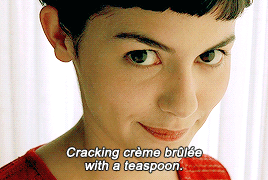Directly Reprogramming A Cell's Identity With Gene Editing
Directly Reprogramming a Cell's Identity with Gene Editing
Researchers have used CRISPR—a revolutionary new genetic engineering technique—to convert cells isolated from mouse connective tissue directly into neuronal cells.
In 2006, Shinya Yamanaka, a professor at the Institute for Frontier Medical Sciences at Kyoto University at the time, discovered how to revert adult connective tissue cells, called fibroblasts, back into immature stem cells that could differentiate into any cell type. These so-called induced pluripotent stem cells won Yamanaka the Nobel Prize in medicine just six years later for their promise in research and medicine.
Since then, researchers have discovered other ways to convert cells between different types. This is mostly done by introducing many extra copies of “master switch” genes that produce proteins that turn on entire genetic networks responsible for producing a particular cell type.
Now, researchers at Duke University have developed a strategy that avoids the need for the extra gene copies. Instead, a modification of the CRISPR genetic engineering technique is used to directly turn on the natural copies already present in the genome.
These early results indicate that the newly converted neuronal cells show a more complete and persistent conversion than the method where new genes are permanently added to the genome. These cells could be used for modeling neurological disorders, discovering new therapeutics, developing personalized medicines and, perhaps in the future, implementing cell therapy.
The study was published on August 11, 2016, in the journal Cell Stem Cell.
“This technique has many applications for science and medicine. For example, we might have a general idea of how most people’s neurons will respond to a drug, but we don’t know how your particular neurons with your particular genetics will respond,” said Charles Gersbach, the Rooney Family Associate Professor of Biomedical Engineering and director for the Center for Biomolecular and Tissue Engineering at Duke. “Taking biopsies of your brain to test your neurons is not an option. But if we could take a skin cell from your arm, turn it into a neuron, and then treat it with various drug combinations, we could determine an optimal personalized therapy.”
“The challenge is efficiently generating neurons that are stable and have a genetic programming that looks like your real neurons,” says Joshua Black, the graduate student in Gersbach’s lab who led the work. “That has been a major obstacle in this area.”
In the 1950s, Professor Conrad Waddington, a British developmental biologist who laid the foundations for developmental biology, suggested that immature stem cells differentiating into specific types of adult cells can be thought of as rolling down the side of a ridged mountain into one of many valleys. With each path a cell takes down a particular slope, its options for its final destination become more limited.
If you want to change that destination, one option is to push the cell vertically back up the mountain—that’s the idea behind reprogramming cells to be induced pluripotent stem cells. Another option is to push it horizontally up and over a hill and directly into another valley.
“If you have the ability to specifically turn on all the neuron genes, maybe you don’t have to go back up the hill,” said Gersbach.
Previous methods have accomplished this by introducing viruses that inject extra copies of genes to produce a large number of proteins called master transcription factors. Unique to each cell type, these proteins bind to thousands of places in the genome, turning on that cell type’s particular gene network. This method, however, has some drawbacks.
“Rather than using a virus to permanently introduce new copies of existing genes, it would be desirable to provide a temporary signal that changes the cell type in a stable way,” said Black. “However, doing so in an efficient manner might require making very specific changes to the genetic program of the cell.”
In the new study, Black, Gersbach, and colleagues used CRISPR to precisely activate the three genes that naturally produce the master transcription factors that control the neuronal gene network, rather than having a virus introduce extra copies of those genes.
CRISPR is a modified version of a bacterial defense system that targets and slices apart the DNA of familiar invading viruses. In this case, however, the system has been tweaked so that no slicing is involved. Instead, the machinery that identifies specific stretches of DNA has been left intact, and it has been hitched to a gene activator.
The CRISPR system was administered to mouse fibroblasts in the laboratory. The tests showed that, once activated by CRISPR, the three neuronal master transcription factor genes robustly activated neuronal genes. This caused the fibroblasts to conduct electrical signals—a hallmark of neuronal cells. And even after the CRISPR activators went away, the cells retained their neuronal properties.
“When blasting cells with master transcription factors made by viruses, it’s possible to make cells that behave like neurons,” said Gersbach. “But if they truly have become autonomously functioning neurons, then they shouldn’t require the continuous presence of that external stimulus.”
The experiments showed that the new CRISPR technique produced neuronal cells with an epigenetic program at the target genes matching the neuronal markings naturally found in mouse brain tissue.
“The method that introduces extra genetic copies with the virus produces a lot of the transcription factors, but very little is being made from the native copies of these genes,” explained Black. “In contrast, the CRISPR approach isn’t making as many transcription factors overall, but they’re all being produced from the normal chromosomal position, which is a powerful difference since they are stably activated. We’re flipping the epigenetic switch to convert cell types rather than driving them to do so synthetically.”
The next steps, according to Black, are to extend the method to human cells, raise the efficiency of the technique and try to clear other epigenetic hurdles so that it could be applied to model particular diseases.
“In the future, you can imagine making neurons and implanting them in the brain to treat Parkinson’s disease or other neurodegenerative conditions,” said Gersbach. “But even if we don’t get that far, you can do a lot with these in the lab to help develop better therapies.”
More Posts from Smparticle2 and Others
:)











Untitled // Jake Chamseddine

GUYS https://twitter.com/AltNatParkSer/status/824054953404669953 http://www.scientistsmarchonwashington.com/ THE NATIONAL PARK SERVICE IS IN OPEN REBELLION














“Conceited, spoiled, and arrogant- all of those things, of course, are true to the character. But she had courage and determination, and that, I think, is why women must secretly admire her.” -Vivien Leigh

Seeing stable topology using instabilities
We are most familiar with the four conventional phases of matter: solid, liquid, gas, and plasma. Changes between two phases, known as phase transitions, are marked by abrupt changes in material properties such as density. In recent decades a wide body of physics research has been devoted to discovering new unconventional phases of matter, which typically emerge at ultra-low temperatures or in specially-structured materials. Exotic “topological” phases exhibit properties that can only change in a quantized (stepwise) manner, making them intrinsically robust against impurities and defects.
In addition to topological states of matter, topological phases of light can emerge in certain optical systems such as photonic crystals and optical waveguide arrays. Topological states of light are of interest as they can form the basis for future energy-efficient light-based communication technologies such as lasers and integrated optical circuits.
However, at high intensities light can modify the properties of the underlying material. One example of such a phenomenon is the damage that the high-power lasers can inflict on the mirrors and lenses. This in turn affects the propagation of the light, forming a nonlinear feedback loop. Nonlinear optical effects are essential for the operation of certain devices such as lasers, but they can lead to the emergence of disorder from order in a process known as modulational instability, as is shown in Figure 1. Understanding the interplay between topology and nonlinearity is a fascinating subject of ongoing research.
Read more.

(Image caption: Young neurons (pink), responsible for encoding new memories, must compete with mature neurons (green) to survive and integrate into the hippocampal circuit. Credit: Kathleen McAvoy, Sahay Lab)
Making memories stronger and more precise during aging
When it comes to the billions of neurons in your brain, what you see at birth is what get — except in the hippocampus. Buried deep underneath the folds of the cerebral cortex, neural stem cells in the hippocampus continue to generate new neurons, inciting a struggle between new and old as the new attempts to gain a foothold in the memory-forming center of the brain.
In a study published online in Neuron, Harvard Stem Cell Institute (HSCI) researchers at Massachusetts General Hospital and the Broad Institute of MIT and Harvard in collaboration with an international team of scientists found they could bias the competition in favor of the newly generated neurons.
“The hippocampus allows us to form new memories of ‘what, when and where’ that help us navigate our lives,” said HSCI Principal Faculty member and the study’s corresponding author, Amar Sahay, PhD, “and neurogenesis—the generation of new neurons from stem cells—is critical for keeping similar memories separate.”
As the human brain matures, the connections between older neurons become stronger, more numerous, and more intertwined, making integration for the newly formed neurons more difficult. Neural stem cells become less productive, leading to a decline in neurogenesis. With fewer new neurons to help sort memories, the aging brain can become less efficient at keeping separate and faithfully retrieving memories.
The research team selectively overexpressed a transcription factor, Klf9, only in older neurons in mice, which eliminated more than one-fifth of their dendritic spines, increased the number of new neurons that integrated into the hippocampus circuitry by two-fold, and activated neural stem cells.
When the researchers returned the expression of Klf9 back to normal, the old dendritic spines reformed, restoring competition. However, the previously integrated neurons remained.
“Because we can do this reversibly, at any point in the animals life we can rejuvenate the hippocampus with extra, new, encoding units,” said Sahay, who is also an investigator with the MGH Center for Regenerative Medicine.
The authors employed a complementary strategy in which they deleted a protein important for dendritic spines, Rac1, only in the old neurons and achieved a similar outcome, increasing the survival of the new neurons.
In order to keep two similar memories separate, the hippocampus activates two different populations of neurons to encode each memory in a process called pattern separation. When there is overlap between these two populations, researchers believe it is more difficult for an individual to distinguish between two similar memories formed in two different contexts, to discriminate between a Sunday afternoon stroll through the woods from a patrol through enemy territory in a forest, for example. If the memories are encoded in overlapping populations of neurons, the hippocampus may inappropriately retrieve either. If the memories are encoded in non-overlapping populations of neurons, the hippocampus stores them separately and retrieves them only when appropriate.
Mice with increased neurogenesis had less overlap between the two populations of neurons and had more precise and stronger memories, which, according to Sahay, demonstrates improved pattern separation.
Mice with increased neurogenesis in middle age and aging cohorts exhibited better memory precision.
“We believe that by increasing the hippocampus’s ability to do what it supposed to do and not retrieve past experiences when it shouldn’t can help,” Sahay said. This may be particularly useful for individuals suffering from post-traumatic stress disorder, mild cognitive impairment, or age-related memory loss.
bethesda-physics-engine.gif







Amélie doesn’t have a boyfriend. She tried once or twice, but the results were a let-down. Instead, she cultivates a taste for small pleasures.
-
 prestigesports-blog liked this · 8 years ago
prestigesports-blog liked this · 8 years ago -
 iamyournymphetamine reblogged this · 8 years ago
iamyournymphetamine reblogged this · 8 years ago -
 bluesagesp liked this · 8 years ago
bluesagesp liked this · 8 years ago -
 ddinthelab liked this · 8 years ago
ddinthelab liked this · 8 years ago -
 smartamd liked this · 8 years ago
smartamd liked this · 8 years ago -
 ottosientto reblogged this · 8 years ago
ottosientto reblogged this · 8 years ago -
 thespringdreamer-blog2 reblogged this · 8 years ago
thespringdreamer-blog2 reblogged this · 8 years ago -
 raptured-night reblogged this · 8 years ago
raptured-night reblogged this · 8 years ago -
 raptured-night liked this · 8 years ago
raptured-night liked this · 8 years ago -
 aurahempcrystals reblogged this · 8 years ago
aurahempcrystals reblogged this · 8 years ago -
 cts7811 liked this · 8 years ago
cts7811 liked this · 8 years ago -
 a-single-neutron liked this · 8 years ago
a-single-neutron liked this · 8 years ago -
 lorchidae liked this · 8 years ago
lorchidae liked this · 8 years ago -
 mullercells reblogged this · 8 years ago
mullercells reblogged this · 8 years ago -
 mullercells liked this · 8 years ago
mullercells liked this · 8 years ago -
 danigre liked this · 8 years ago
danigre liked this · 8 years ago -
 andr0nicus liked this · 8 years ago
andr0nicus liked this · 8 years ago -
 sadsharon liked this · 8 years ago
sadsharon liked this · 8 years ago -
 demonic-passion liked this · 8 years ago
demonic-passion liked this · 8 years ago -
 ag47silver liked this · 8 years ago
ag47silver liked this · 8 years ago -
 connectioncorner liked this · 8 years ago
connectioncorner liked this · 8 years ago -
 megamiyuikamichaelis-ackerman liked this · 8 years ago
megamiyuikamichaelis-ackerman liked this · 8 years ago -
 neurology-studies reblogged this · 8 years ago
neurology-studies reblogged this · 8 years ago -
 scienceeeee-blog reblogged this · 8 years ago
scienceeeee-blog reblogged this · 8 years ago -
 leftfootism liked this · 8 years ago
leftfootism liked this · 8 years ago -
 peaceful-dragon-blog liked this · 8 years ago
peaceful-dragon-blog liked this · 8 years ago -
 tessacter-blog reblogged this · 8 years ago
tessacter-blog reblogged this · 8 years ago -
 tessacter-blog liked this · 8 years ago
tessacter-blog liked this · 8 years ago -
 iridium2013 liked this · 8 years ago
iridium2013 liked this · 8 years ago -
 illuminoname-blog reblogged this · 8 years ago
illuminoname-blog reblogged this · 8 years ago -
 illuminoname-blog liked this · 8 years ago
illuminoname-blog liked this · 8 years ago -
 transsimian liked this · 8 years ago
transsimian liked this · 8 years ago -
 forthesakeofbeinghuman liked this · 8 years ago
forthesakeofbeinghuman liked this · 8 years ago -
 collector-of-stuff liked this · 8 years ago
collector-of-stuff liked this · 8 years ago
